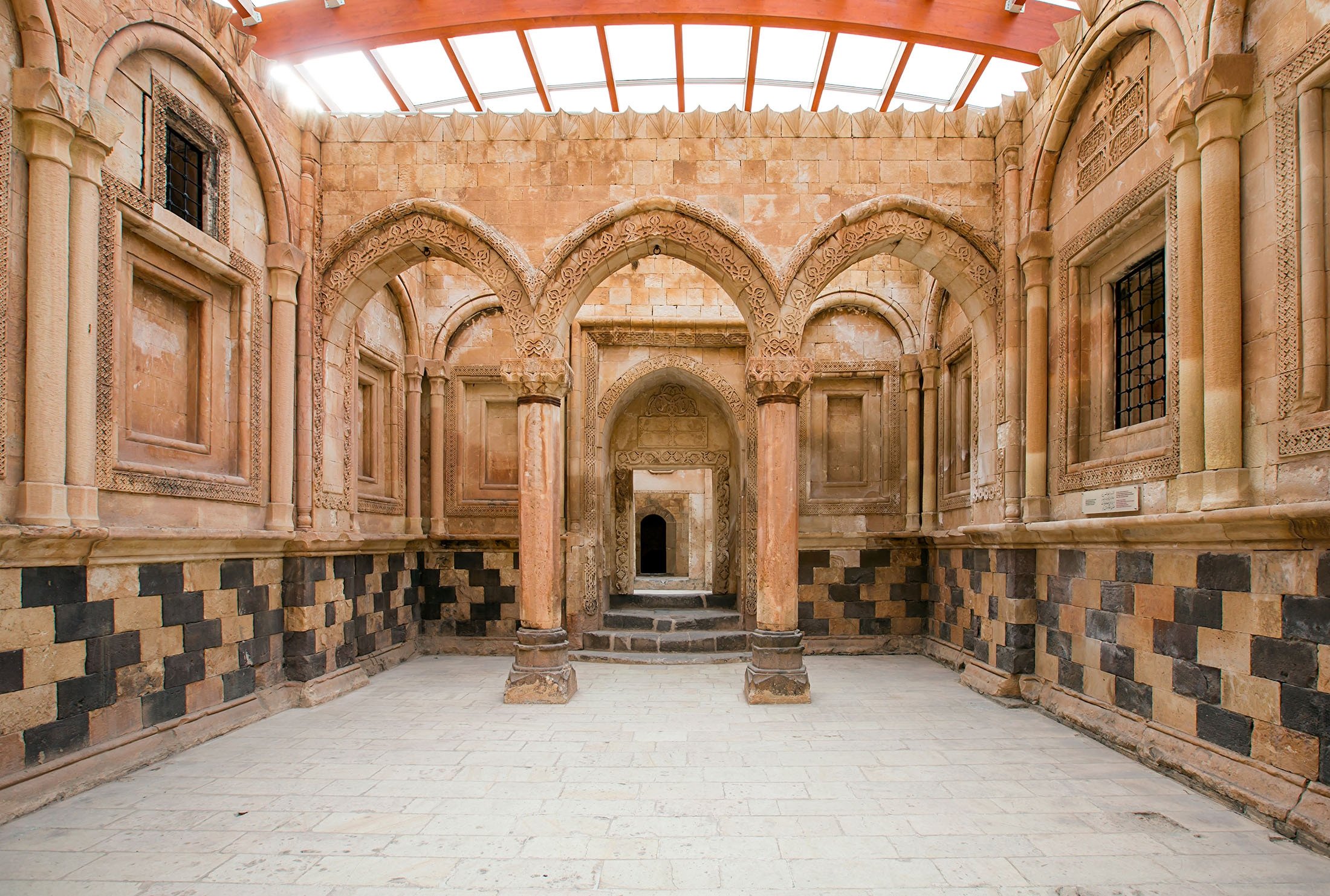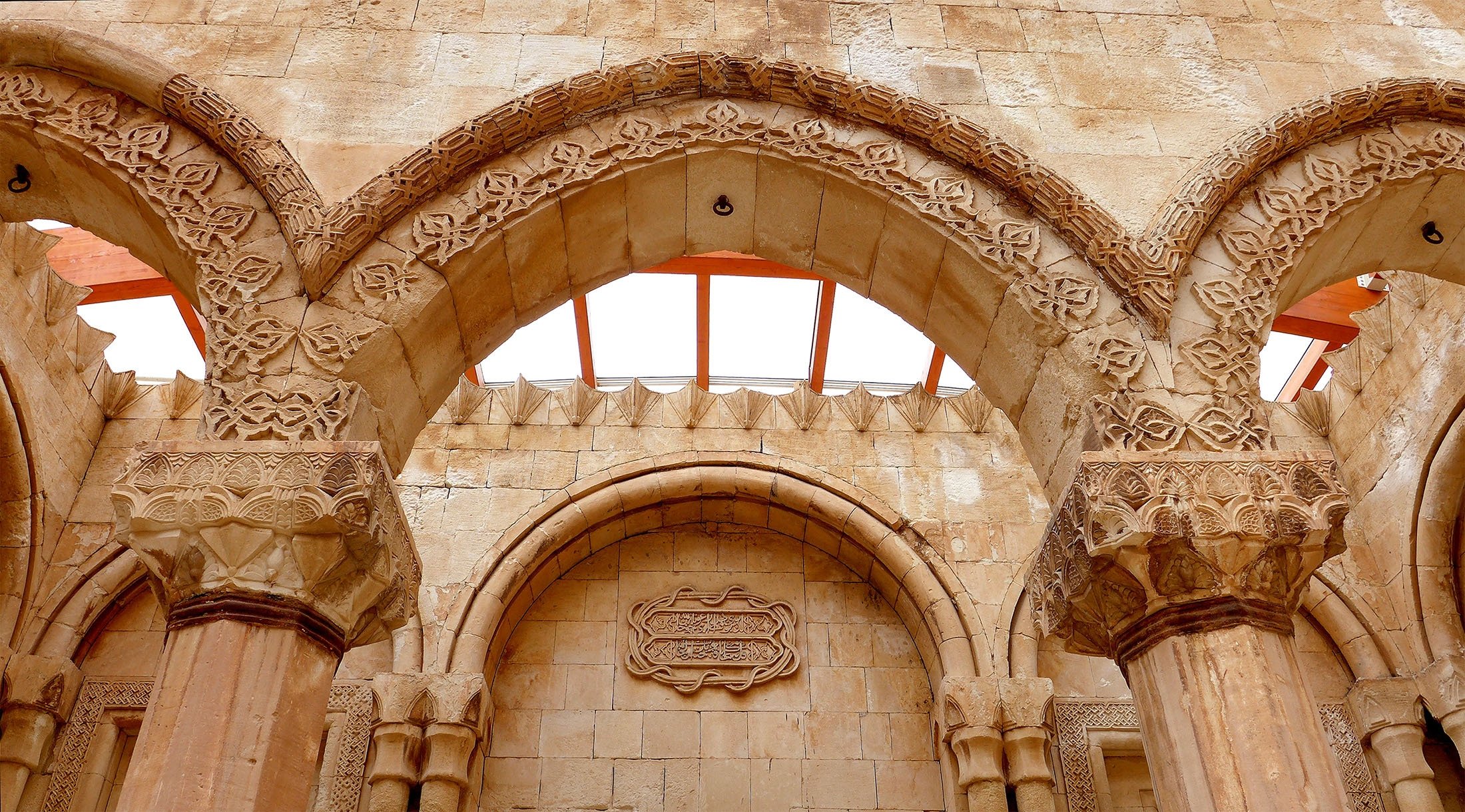© Turkuvaz Haberleşme ve Yayıncılık 2024
The Ishak Pasha Palace, located in the Doğubayazıt district of Ağrı, stands as one of the most important works of the Ottoman Empire in the east, and remains steadfast despite the years with its unique architectural structure intact.
The palace, one of the most important works of the Ottoman Empire in the Eastern Anatolia region and located on a hill between steep cliffs, is among the rarest works of Anatolia with its eagle's nest appearance and 116 rooms.
The heating system used in the Ishak Pasha Palace is one of the first examples of its kind in Anatolia.
The historical structure, which was built on a hill with an elevation of 1,900 meters (6,233 feet), is the center of attention of local and foreign tourists all year round. It is also on the UNESCO World Heritage Tentative List.
The palace is constructed upon the historical Silk Road, a network of trade routes connecting the East and the West and that was central to relations between two continents for nigh on 1,600 years.
It stands on a vast platform of 7,600 square meters (81,805 square feet), near the Iranian frontier of the Ottoman Empire, and as such its high elevation offers a unique strategic importance to the Empire.
The palace is such a unique Ottoman piece of architecture because it borrows heavily from Anatolian, Persian and North Mesopotamian styles and traditions. It fuses all of them together in a mesmerizing fashion that is also influenced largely by Seljuk architecture.
The historical precedence of royal palaces in capital cities, like Bursa, Edirne and Istanbul act as a foundation for Ishak Pasha's design. At the same time, the western influence during the post-classical period also shines, according to the palace's UNESCO listing.
Provinces in the Ottoman Empire, or “eyalets,” were divided into “sanjaks,” which can be translated as banners, or districts. And these sanjaks were governed by sanjakbeys.

The construction of the palace began in 1685 by Çolak Abdi Pasha. The completion of it took 99 years and was finally finished in 1784 by Ishak Pasha, a descendant of Çolak Abdi Pasha and also the sanjakbey of Childir Eyalet, which encapsulated the Beyazıd Sanjak where the palace was located.
The inscription on the crown gate of the harem section reads that it was built in 1784 by Ishak Pasha II from Çıldıroğulları beylic (principality).
After its completion the palace served as the administrative center of the Beyazıd Sanjak.
It went under restoration for 20 years after it was damaged, and subsequently abandoned, by an earthquake in 1840.

Throughout the years, particularly in the 20th and 21st centuries, additional restoration work was deemed necessary to preserve the historical structure.
The complex includes a wide range of Ottoman beauties to behold, including the exterior facades, courts and the mosque. There is also a “selamlık,” the portion of an Ottoman palace or house reserved for men, as contrasted with the “seraglio,” which is reserved for women and forbidden to men.
The palace complex also includes a kitchen, a Turkish bath, dungeons, a mausoleum and a hall for ceremonies and entertainment. And there is the harem, the sacred, inviolable and private space reserved for women in palaces and houses.
